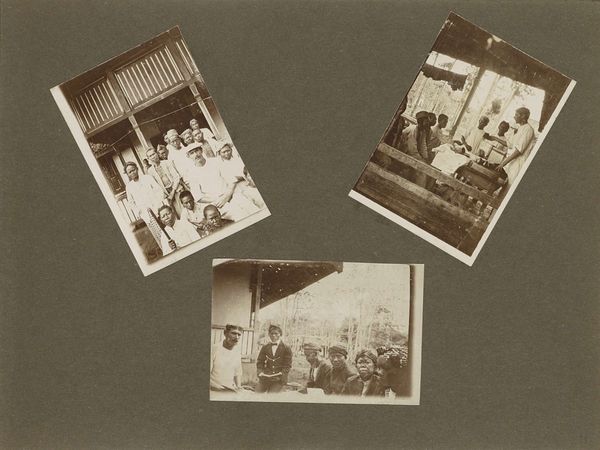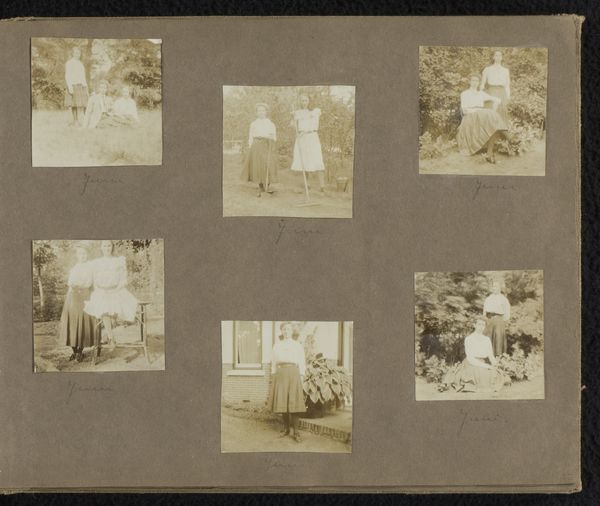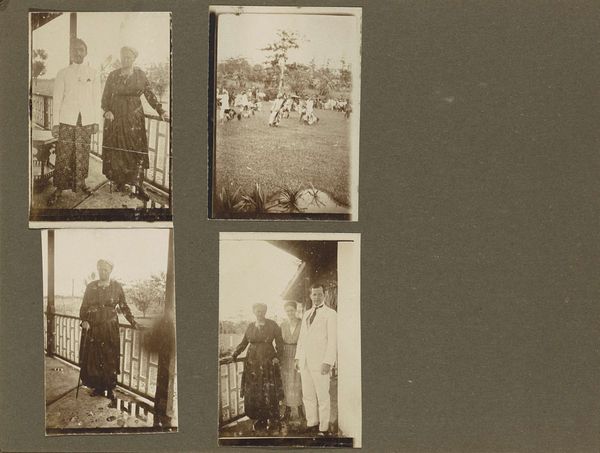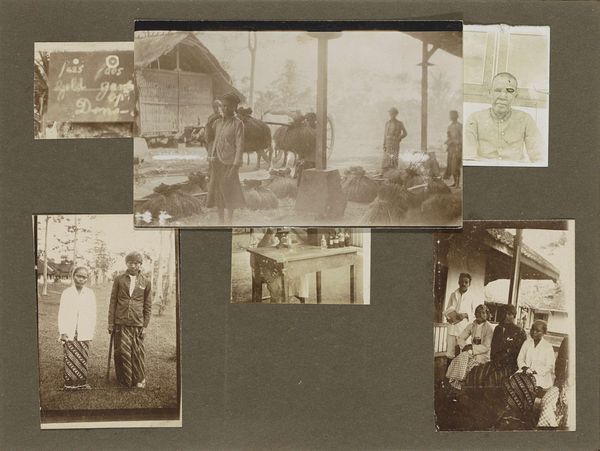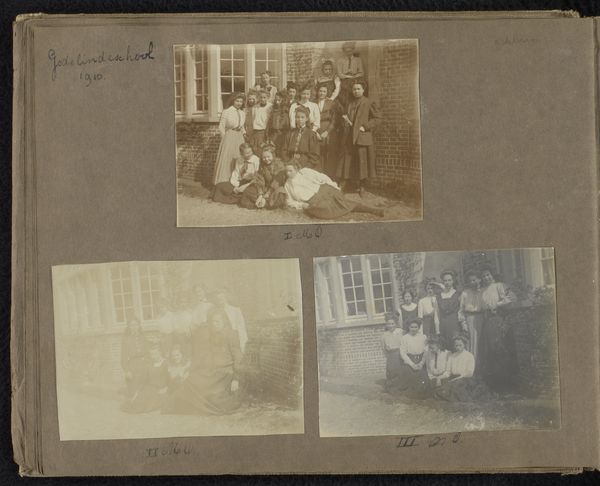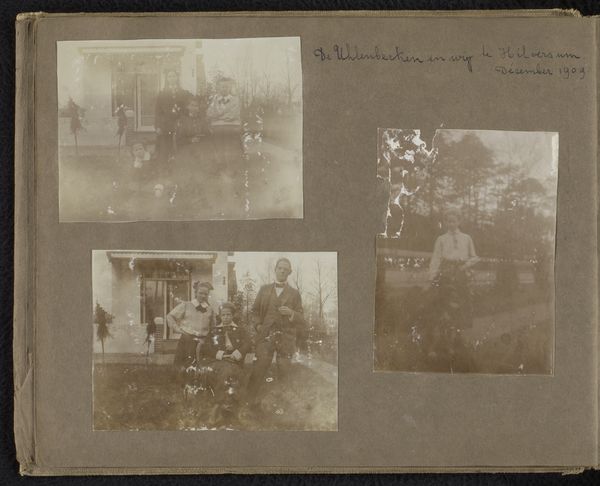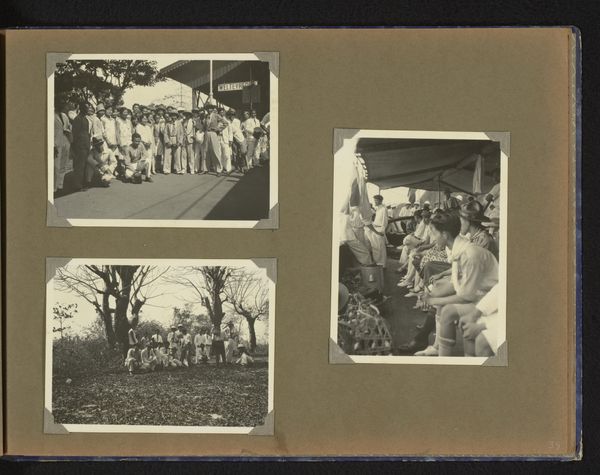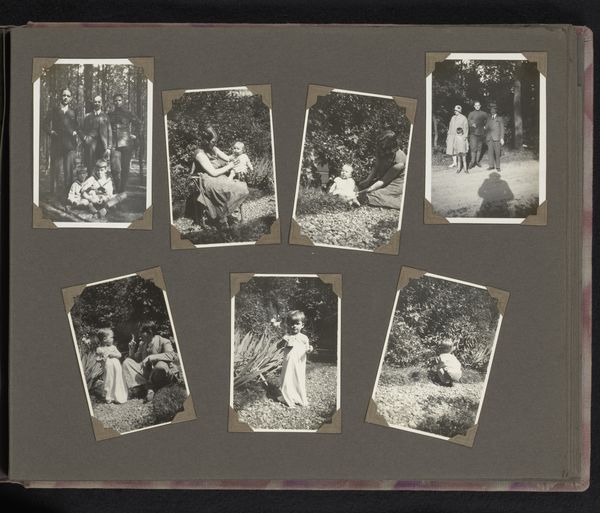
#
aged paper
#
toned paper
#
homemade paper
#
reduced colour palette
#
muted colour palette
#
sketch book
#
personal sketchbook
#
horse
#
storyboard and sketchbook work
#
sketchbook art
#
soft colour palette
Dimensions: height 190 mm, width 260 mm
Copyright: Rijks Museum: Open Domain
Curator: This striking set of photographs is titled "Leprozenkolonie Danaradja: personen en transport," which translates to "Lepers Colony Danaradja: People and Transport." They’re part of a larger, anonymous sketchbook from 1922. Editor: My first thought? It’s an unsettling combination of mundane daily life captured through a faded lens, with the inescapable weight of colonial disease and isolation pressing down. The sepia tones feel like they're burying the scenes deeper in the past. Curator: Indeed. Look at the physicality of the photos themselves – the slightly rough texture of the paper, the uneven edges, the homemade feel of a personal sketchbook. The people featured, likely both colonizers and colonized, are engaged in everyday activities. Do you observe the horse-drawn carriage? Or the figures posed on a bridge? These give some insight into logistical infrastructure but offer limited insights into social dynamics. Editor: The muted palette lends itself to a certain solemnity. The method of transportation—the manual labor required—jumps out. How many hands moved the materials that made up that horse carriage, what mines provided the ore and what social inequalities where required for someone to be sitting inside and others guiding the way forward? How much human energy, quite literally, does a society pour into caring (or not caring) for the sick? This is something the photograph doesn’t provide enough information on. Curator: The absence of a clear narrative, a typical aesthetic for photography, adds to its allure. These were quickly drawn and snapped from what one can only imagine to be moments from this colonizer's lived experience. What were they hoping to grasp and capture by fixing an image through chemicals on paper? Editor: I suppose one thing these images suggest to me is the banality of the process and material – photo paper and portable transportation as evidence. What seems crucial from an outsider's perspective – leprosy, life and death – seems, well, commonplace to them. I wonder if this person even saw or took account of their positionality and relationship to this location as colonizers, and if such questions about process had to be pushed from the outside looking in. Curator: I agree entirely. It leaves you yearning to connect those moments, those colonial snapshots, to understand and weave the narratives yourself. Editor: Yes, and in that yearning, in the gaps, lies the power, doesn’t it? And the limitations. Thank you for the extra context.
Comments
No comments
Be the first to comment and join the conversation on the ultimate creative platform.
